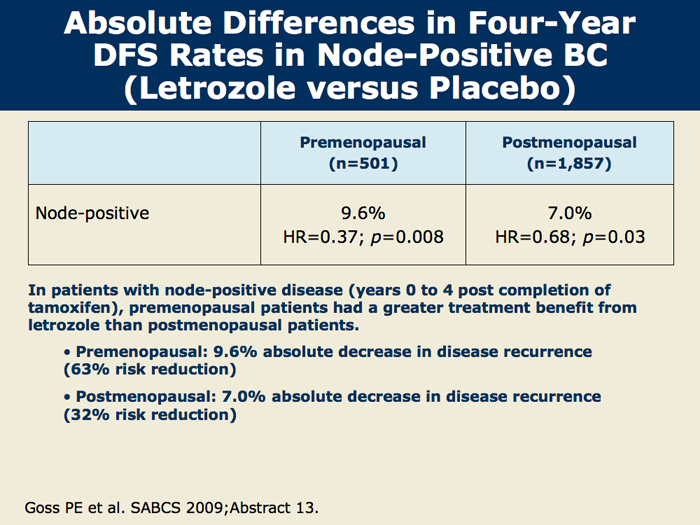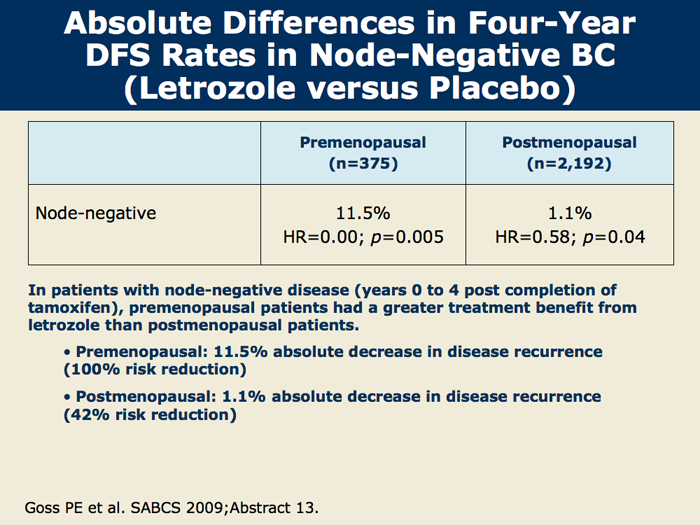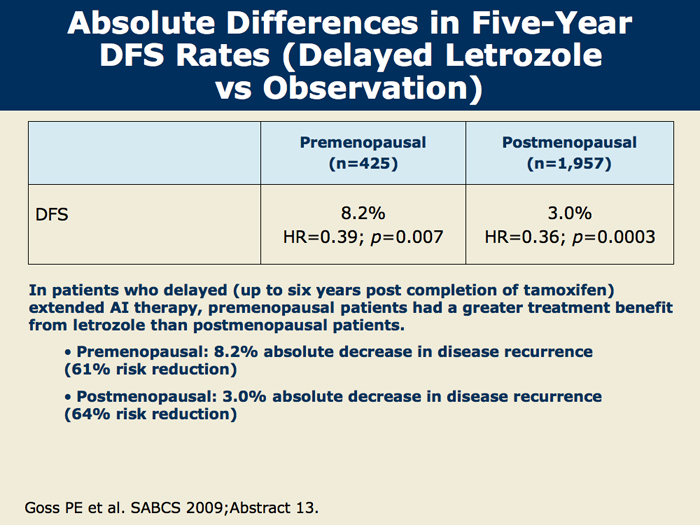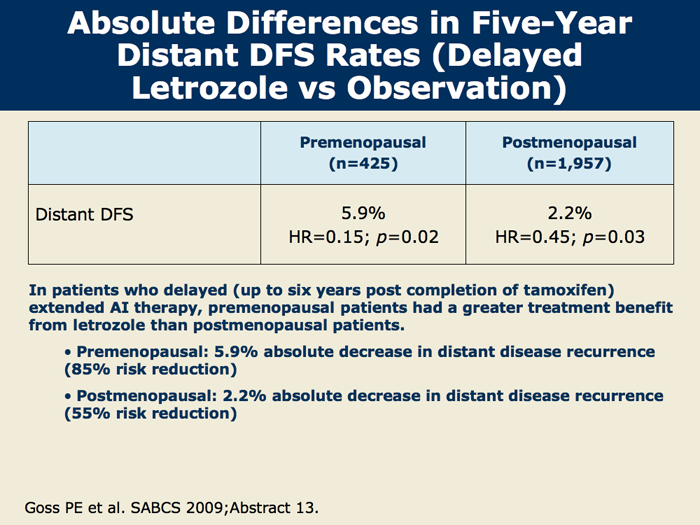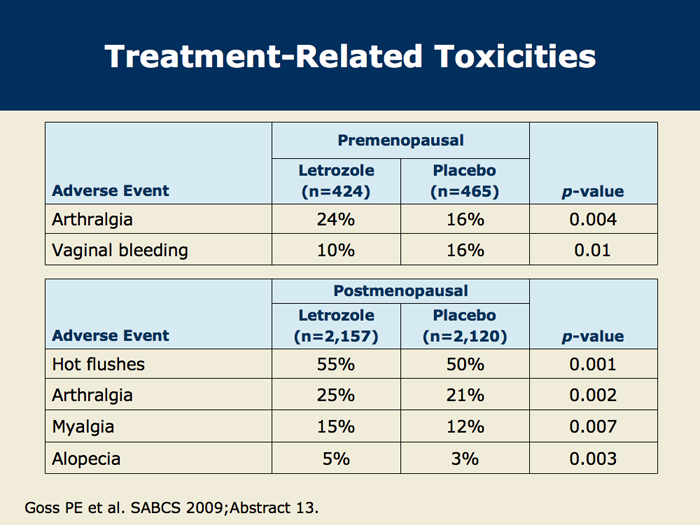
Slide 4 of 12
DR CHLEBOWSKI: Postmenopausal is defined as an absence of menstruation for 12 months without intervention that could influence menstruation, such as chemotherapy, tamoxifen or marathon running.
Approximately 900 women, who were on average 45 years old and premenopausal at the time of their original diagnosis, were allowed entry into the trial after becoming amenorrheic with chemotherapy and/or tamoxifen, and thereby considered to be “postmenopausal.”

Slide 6 of 12
DR CHLEBOWSKI: It is interesting that in this group of patients who received delayed letrozole, the women who were premenopausal at diagnosis had a substantially greater reduction in risk of recurrence — 75 percent — compared to the risk reduction with delayed letrozole observed in postmenopausal women at postunblinding of the study — 30 percent.
I believe the explanation for this is that women who undergo normal menopause experience a gradual hormonal adjustment, because the perimenopause period lasts for about five years, and so the effect of hormonal adjustment from treatment on the tumor is not as great relative to what it would be in premenopausal women who become postmenopausal with chemotherapy and added tamoxifen.
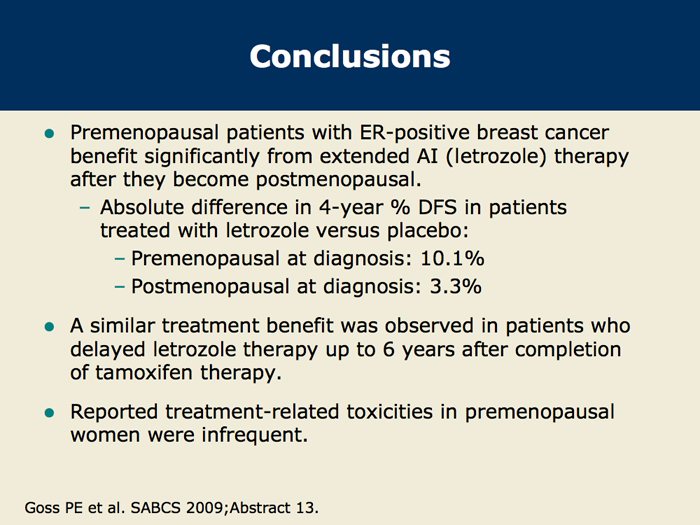
Slide 12 of 12
DR LOVE: What criteria in terms of menopausal status would you require in order to switch to an AI after five years of tamoxifen?
DR CHLEBOWSKI: I would require women to be at least 45 years old at the time of diagnosis and to have been receiving tamoxifen for five years. They would have to be amenorrheic from chemotherapy and maintain their amenorrheic status while receiving tamoxifen.




